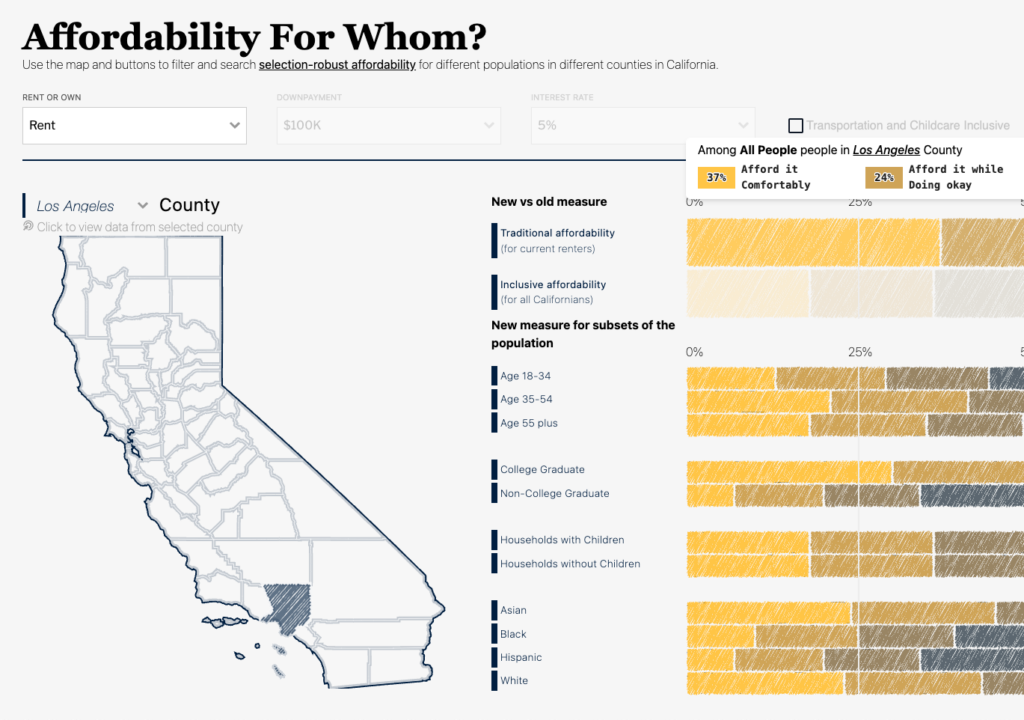Lessons from the Great Recession for Today: Housing Aid Now!
Published On March 19, 2020
As I personally hunker down, work from home, and get better at virtual technology as we work to slow the spread of COVID-19, I am well aware of how privileged I am to be able to do so. The enormity of what is upon us for working families across America has hit me hard. I am also having déjà vu from the early days of 2009, when I was with the Federal Housing Administration and confronting a singular and difficult question: “How do we respond?”
I am proud of the choices we made to help people in immediate need, but frankly, I am also reflecting on all the paths not traveled. The path was blocked in part by a lack of political will and consensus and in part because policymakers were uncertain in those early days just how bad this would get. Yet today, I have no doubt that the crisis would have resolved faster and better for the vast majority of Americans had we done more to simply keep people in their homes.
I realize this crisis is not the same as the last. And that there are many other urgent actions the federal government needs to take to stem the impact of the crisis other than housing. That said, we can’t tell people to “shelter in place” if they are at risk of losing that shelter through no fault of their own.
The financial crisis offers two important lessons for how federal, state, and local agencies should respond to this pandemic with respect to housing. First, emergency assistance must be comprehensive and directly aimed at those individuals with the greatest need. Second, for many households, the “crisis” will not be over in a few weeks or even a few months. We need to act now to ensure that the recovery is broadly shared, and that those most impacted by the crisis of today—lower-income families and vulnerable seniors—are not left out in the cold.
Here, I offer a few ideas for how to structure both the emergency response and the longer-term interventions that will be needed to preserve and restore housing stability and security.
Emergency assistance is critical but just temporarily “stopping the clock” is not going to be sufficient to protect vulnerable households.
In the last couple of days, the federal government has finally recognized the need for a response, and the plan just approved by Congress includes many important emergency responses with respect to health, food, and unemployment insurance and cash payments to some households. All of this (and more) is desperately needed. Yet these responses do not directly address the largest expense families have while their incomes drop precipitously: housing. What can and should government, at all levels, be doing to ensure stable housing for all of those impacted by the loss of income driven by COVID-19?
One option is relief from governmental bodies on eviction and foreclosure proceedings. For example, California Governor Newsom’s Executive Order N-28-20, allows local jurisdictions to impose limitations on residential and commercial evictions, and New York has suspended its eviction proceedings statewide.(1) In addition, the President has called on HUD to hold back on evictions in HUD-assisted housing and to delay foreclosures on Federal Housing Administration-insured mortgages through the end of April. And Fannie Mae and Freddie Mac are poised to do the same following direction from their federal regulator.(2) While actions such as these can be helpful in the very short-term, they simply delay when rent or mortgage payments must be paid or when evictions start up again. For low-income families, particularly in higher-cost cities, the impact of this crisis on their financial stability will last much longer. Adding missed rent or mortgage payments onto already cost-burdened households will lead to continued hardship well after these moratoriums end.
Emergency vouchers are provided through FEMA in natural disasters, and a similar program should be enacted immediately.
Direct emergency assistance is the only solution that will be effective in keeping people in their homes over the long-term. Individuals and families impacted by a loss of income should have a simple and easy way of qualifying for a direct housing payment voucher. While cash payments can help, the amounts under consideration in the Congress at present are not remotely adequate to address monthly housing costs shortages. And because they can be used for the purpose deemed best by the recipient, they don’t provide owners, lenders, and investors of commercial rental properties the certainty they require to forestall firesales or foreclosure. Emergency vouchers are provided through FEMA in natural disasters, and administered by HUD at scale in relatively short notice for our worst natural disasters—as happened during hurricanes Katrina, Rita, and Sandy. A similar program should be funded immediately and implemented at the national scale. In this way, both families and their creditors can be made whole on a current basis. Yes, this will be expensive, but stemming housing insecurity in the short-term will enable a smoother and more equitable path as we recover. In addition, FEMA assistance can be used to pay for temporary housing (such as stays in hotels or motels), which could help service providers who are trying to get unhoused individuals and families off the street.
Significant action is needed now to mitigate the worst impacts of what is shaping up to be a longer-term economic disruption.
While we cannot say the full extent of the impact that a global economic disruption will have on the housing markets (rental and ownership), it is hard to imagine that this broad shutdown in all sectors of the economy will not take a significant toll. Newly-completed rental buildings are likely to stand empty as households stay put and as employment growth slows. Prospective homeowners are not out shopping for their first home, or moving to a new one. Home and apartment values will take a hit, projects underway will stall due to disrupted supply chains, and new construction in the planning stages will have more difficulties finding capital.
How we plan now for this long-term disruption will set the stage for the arc of the recovery, and who will benefit. The response to the foreclosure crisis was far too timid. While the federal government initiated programs such as the Neighborhood Stabilization Program and Hardest Hit Funds in the wake of the foreclosure crisis, these programs were not well-funded nor structured to optimize community and family stability. Foreclosed homes either stood empty or were sold to investors, leading to dramatic changes in both neighborhood composition and homeownership rates in communities of color. The question to answer now, rather than later, is: how can and should government address the longer-term recovery efforts that will inevitably be needed?
The federal government should act now to build the capacity of mission-driven entities.
I expect greater turmoil in the rental market this time around. The growth in the number of renter households, coupled with the fact that renters are more likely to be lower-income, means that this population is particularly vulnerable. If the rental market weakens, it is possible that single-family rental companies will divest themselves of these assets. Rather than allowing for another round of more speculative investment in rental properties, the federal government should act now to build the capacity for mission-driven entities to aggressively purchase rental assets (single-family or multifamily) that may become available at discounted values. This goes beyond just giving a first right to purchase (as was the case during the foreclosure crisis), but rather ensuring that mission-driven entities have access to capital (and capital not tied up in long, bureaucratic application forms) and technical assistance. For example, a governmental backstop (for example through FHA or the GSEs) or guarantee could be made available to high-performing existing entities (for-profit or nonprofit) in exchange for long-term restrictions on rents. As the Federal Reserve keeps interest rates low, access to debt capital will make a huge difference in who benefits from being able to buy and hold properties. Let’s shift the balance towards mission-driven ownership and affordable housing preservation.
Local, regional, and state governments should focus on land banking strategies that can spur continued affordable housing production in high-cost markets.
This is not the time to stop adding to new housing supply in our markets facing severe and durable affordability challenges. There is a reason they are called “real estate cycles.” Local, regional, and state governments should act now to acquire land that can be “banked” for future affordable projects, and continue to support construction to keep ahead of this inevitable spike. A stimulus package must include funding to support construction of affordable housing serving our most vulnerable and low-income populations, including what will likely be a growing homeless population requiring permanent housing with supportive services. The Community Development Block Grant program for disaster recovery overseen by FEMA and HUD and administered by state governments is a good model for how these funds could be administered at scale, as would be the significant expansion of the Low-Income Housing Tax Credit program. But perhaps even more important in the long-run, the federal government must step in to significantly spur apartment construction built cost-effectively in factories in order to produce moderately-priced rents today with covenants to maintain affordability in the future. Local and state governments also need to use this moment to redouble their efforts to streamline local processes, lower unnecessary fees, and expand where dense residential uses are allowed as-of-right.
We must learn from the last crisis. Instead of half measures and unnecessary red tape, now is the time for bold and nimble action that can deliver real relief to struggling households and communities.
I do not think any of us yet understand how this pandemic will ultimately impact the global economy and housing markets in particular. Part of the story of what happens will be dependent on what emergency actions we take now. The most important lesson that I learned from being in the midst of the financial crisis response in the Obama administration from 2009-2014 is that the inability to predict how bad it could become led the country and its political leaders to be too timid and too indirect. Further, the emergency assistance programs were mired in red tape and bureaucracy, putting undue burden on individuals and nonprofits seeking help while allowing private capital to flow freely. As one of my colleagues suggested at the time: “It seems like we develop guidelines to catch the minnows and let the big fish go free!”
Structuring programs that are quick and easy for individuals to access assistance might let some “minnows” go free, but this is a small price to pay for saving the economy and well-being of the American people. At the same time, there should be funding to investigate and prosecute any “big fish” that seek to advantage themselves and defraud the government by siphoning off aid through illegal actions (as fake housing counselors and loan modification sharks did during the last crisis).
Ultimately, the ideas presented here may not be all of the “right” ideas for the circumstances we are confronting with this crisis. Yet they do represent my honest assessment of what I learned from our last shared crisis.“If I knew then what I know now” is a lesson we shouldn’t ignore. I do know that in these times being bolder will be better. We need to find the courage and will to tackle all of the issues we face, including and especially housing, and do it now.
Carol Galante served in the Obama Administration at HUD as the Deputy Assistant Secretary for Multifamily Housing (2009-2012) and the Federal Housing Commissioner (2012-2014)
(1) See: https://www.gov.ca.gov/wp-content/uploads/2020/03/3.16.20-Executive-Order.pdf
(2) See: https://www.fhfa.gov/Media/PublicAffairs/Pages/FHFA-Suspends-Foreclosures-and-Evictions-for-Enterprise-Backed-Mortgages.aspx.





